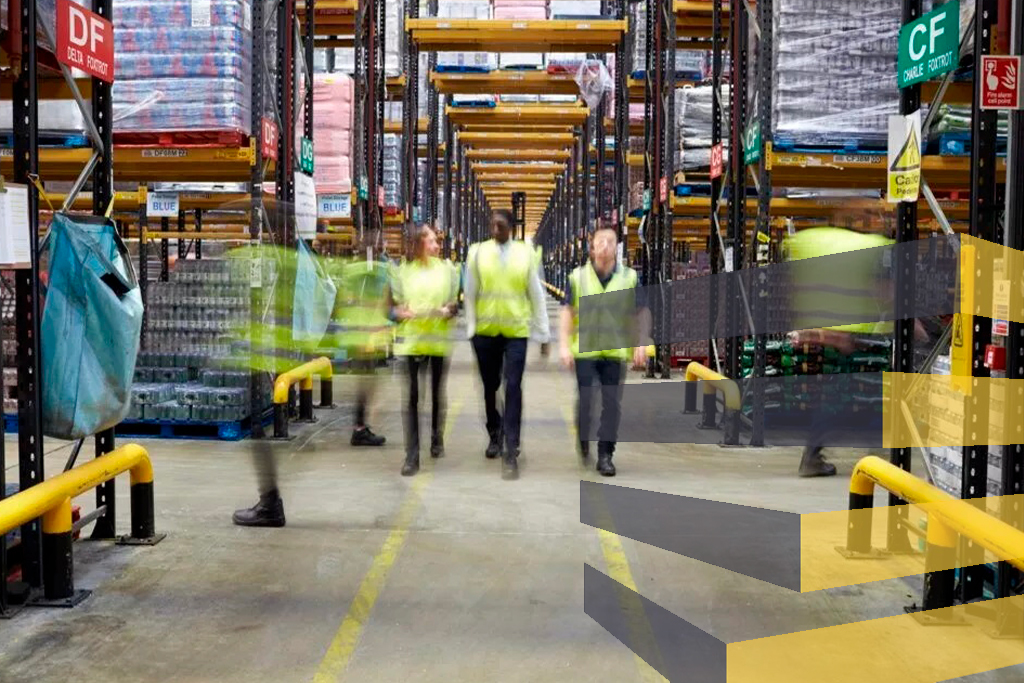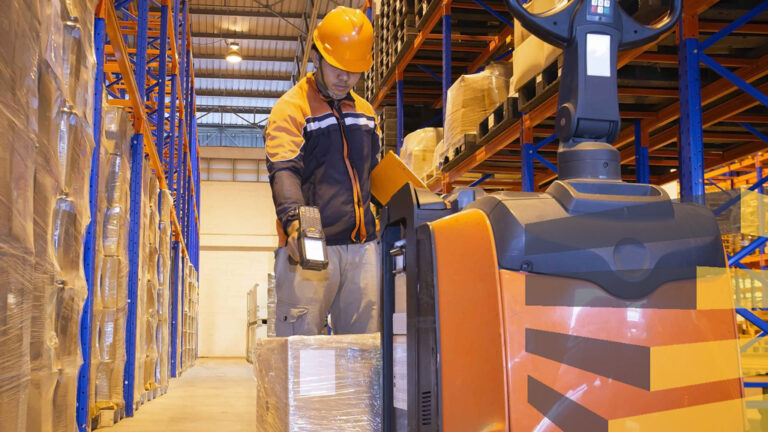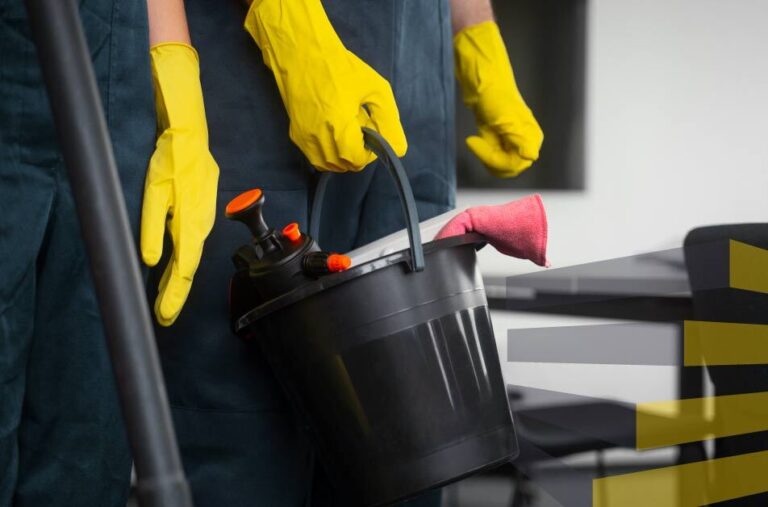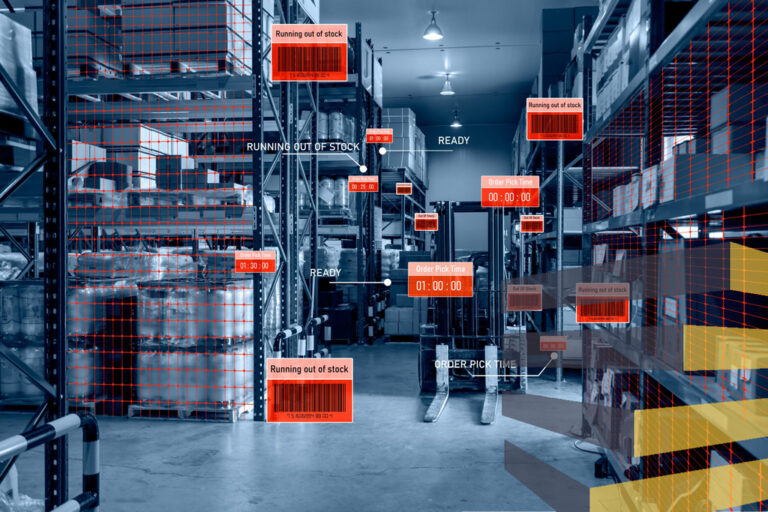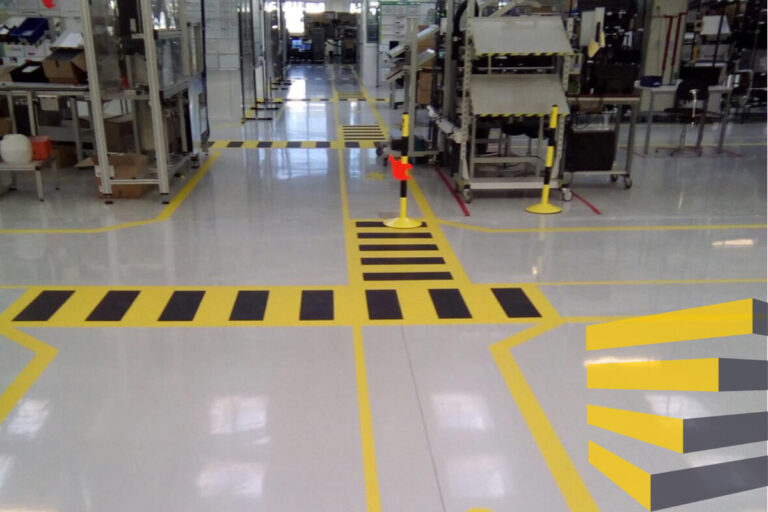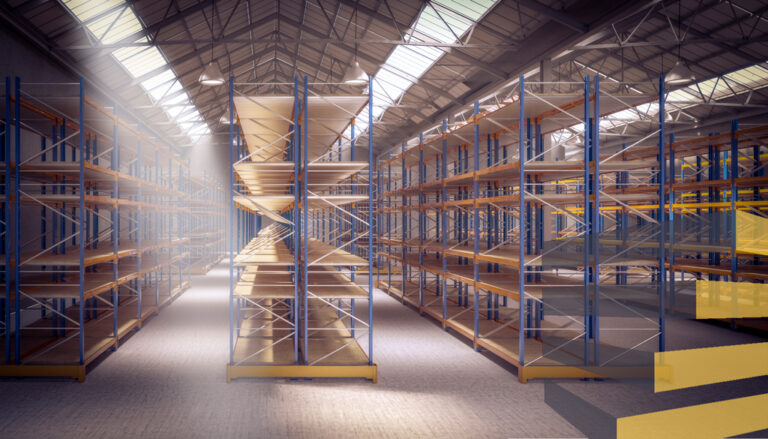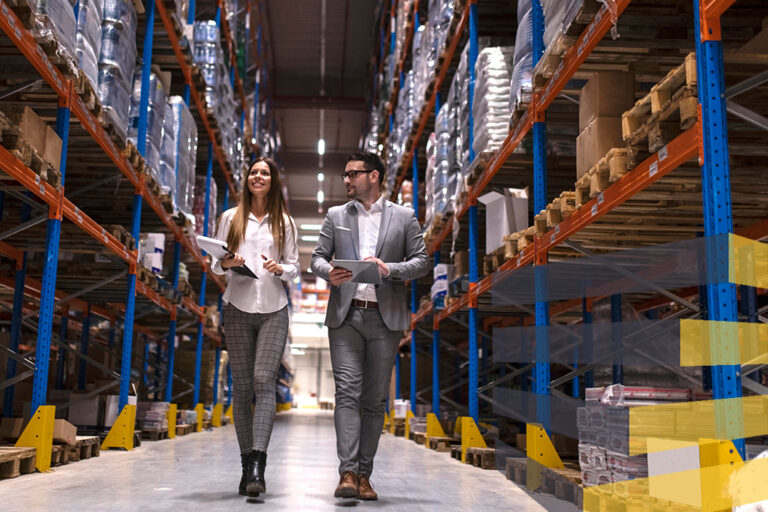Table of Contents
Logistics centers can be dangerous places, with heavy machinery and large loads in operation. Following these 10 warehouse safety tips can reduce the chances of serious injury in your facility and make it a better place to work.
Among other elements, warehouse safety barriers are critical for protecting warehouses, where you’ll find a wide range of activities involving people, goods, and machinery. These barriers serve as protective measures, preventing accidents, controlling traffic, and safeguarding assets.
To ensure the protection of both personnel and property, there are some basic warehouse safety tips that all managers can follow to ensure peak operational performance.
Contact us for more information.
Warehouse safety tips: 10 key considerations
Selecting the right warehouse safety equipment and practices depends on a variety of factors, including the needs of the facility, the type of traffic, and potential hazards. By implementing some or all of these top 10 warehouse safety tips you can make a more informed and efficient decision.
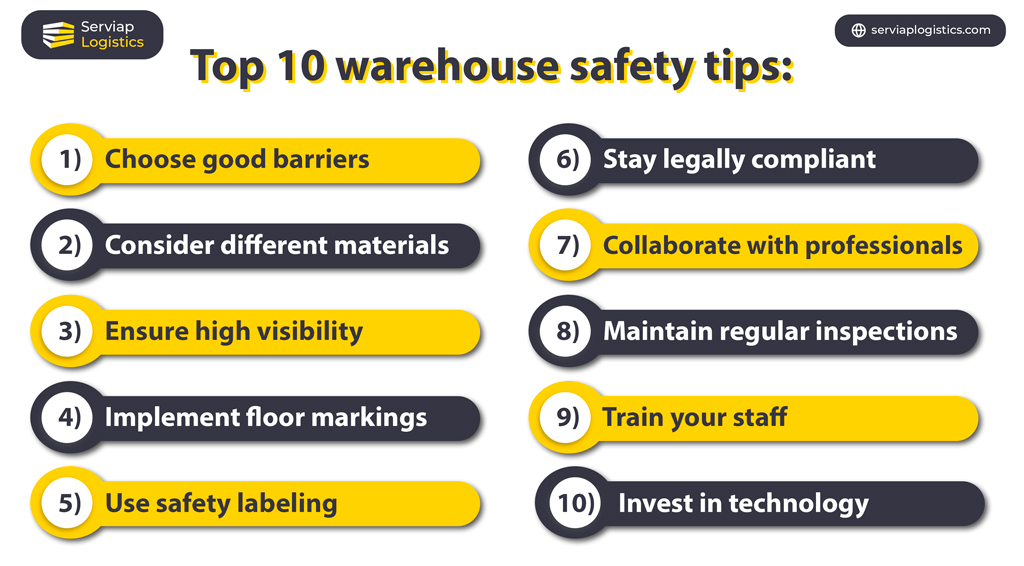
1) Choose the right types of barriers
When you’re designing a security system, one of the first warehouse safety tips to follow is to have the right barriers in the right places. For instance, warehouse guardrails deliminate areas, and they may be heavy duty, medium strength, or for lighter, flexible purposes.
You may also need bollards and column protectors as strategic poles to protect infrastructure or restrict access to certain areas. They are often used to secure doorways and supporting beams from heavy impact.
Additionally, retractable barriers can be used as temporary dividers and are light and flexible enough to be moved and deployed as necessary. Safety gates are also commonly used flexibly to prevent access to loading bays whenever not in use.
2) Consider your materials
Security barriers also come in various materials, which will work differently on strength, durability, and cost-efficiency. Steel is the most commonly used, for its robustness and durability. It provides excellent resistance against heady impacts, making it a great material for high-traffic areas.
Concrete barriers are also highly protective and resistant to fire. However, they are even less moveable than steel barriers, and are usually cemented into place. This makes them great for permanent layouts but unsuited to warehouses that may need to change their setup.
Plastic safety barriers are lightweight, yet still provide sufficient protection due to high-quality technology. They are resistant to chemicals, moisture, and corrosion while being easier to transport. However, they may not be eco-friendly, so managers should rely on companies that offer green, sustainable solutions, such as Boplan.
3) Ensure high visibility
Visibility is key in preventing accidents. Use bright, contrasting colors for barriers, ensuring they’re easily distinguishable from the surroundings. Reflective materials or paint can enhance visibility in low-light conditions. It’s also important to consider proper placement strategy for signage and barriers.
Additionally, color coding can be incorporated into any warehouse safety tips, providing quick visual cues to identify potential dangers. By implementing a facility-wide system of color coordination and training staff in their use, you make it easy for everyone to stay safe.
4) Implement floor markings
The efficiency of safety barriers can be improved with clearly marked floor stripes and directional arrows. Warehouse floor markings streamline the traffic flow and diminishes the risks of accidents. They help guide staff to follow designated paths and maintain safe distances.
By implementing a clear floor marking system, warehouses can enhance safety protocols. Moreover, floor marks can indicate emergency exits, fire extinguisher locations, and other vital safety information. This visual system not only aids in preventing accidents but also fosters a culture of awareness.
5) Use signage and safety labeling
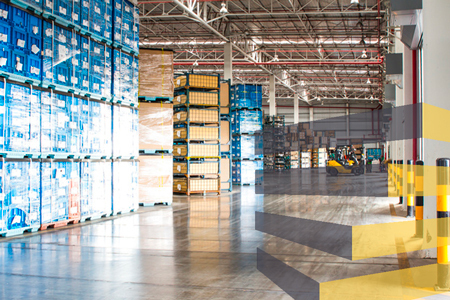
Integrating warehouse safety barriers with effective signage creates a strong defense against hazards. Warehouse safety signage indicates areas where there may be particular danger. Easy symbols and text help convey important information, reinforcing the need for caution and vigilance around potential dangers.
Furthermore, safety labeling plays a pivotal role in awareness and prevention. Labels can be attached to machinery and equipment to give specific instructions or warnings. Labels inform employees about the proper use and potential risks with each item. For instance, labels on chemical units outline handling procedures and protocols.
6) Stay compliant with regulations
Staying compliant with safety norms is crucial for maintaining a secure environment, while also avoiding fines and other penalties from regulatory institutions. When it comes to warehouse safety tips, it’s imperative to follow official guidelines with specific requirements for barrier placement, training, emergency planning, and so on.
Managers should also provide appropriate personal protective equipment (PPE), ensuring that employees are well-informed and stay up-to-date with all regulations changes. Make sure that you are aware of the latest rules from the regulatory authorities in your area, such as ABNT in Brazil, OSHA in the US, and STPS in Mexico.
7) Collaborate with professional installers
When setting up complex safety arrangements or intricate machinery, working with professional installers will save time and money in the long run. Having everything in the right place from day one will stop problems before they start and allow everything to run as smoothly as possible.
Safety during proper equipment installation is vital, especially when using heavy machinery or structures that can collapse and injure workers and damage goods. Working with a professional installer helps minimize safety risks, as they will have experience in how to avoid common problems and can give you their own warehouse safety tips to follow.
8) Maintain regular inspections
A warehouse will still have to deal with deterioration and other incidents even if intital setup is perfect. Maintaining regular inspections in a facility is a critical tool for identifying and rectifying potential hazards before they escalate into serious accidents.
You can collaborate with professionals to enhance inspections as well. Expert insight can bring greater accuracy because inspections involve many aspects, from infrastructure status to compliance with the weight and size limits and daily aspects of an operation.
9) Offer training to the staff
Proper training raises employees’ awareness within the warehouse.
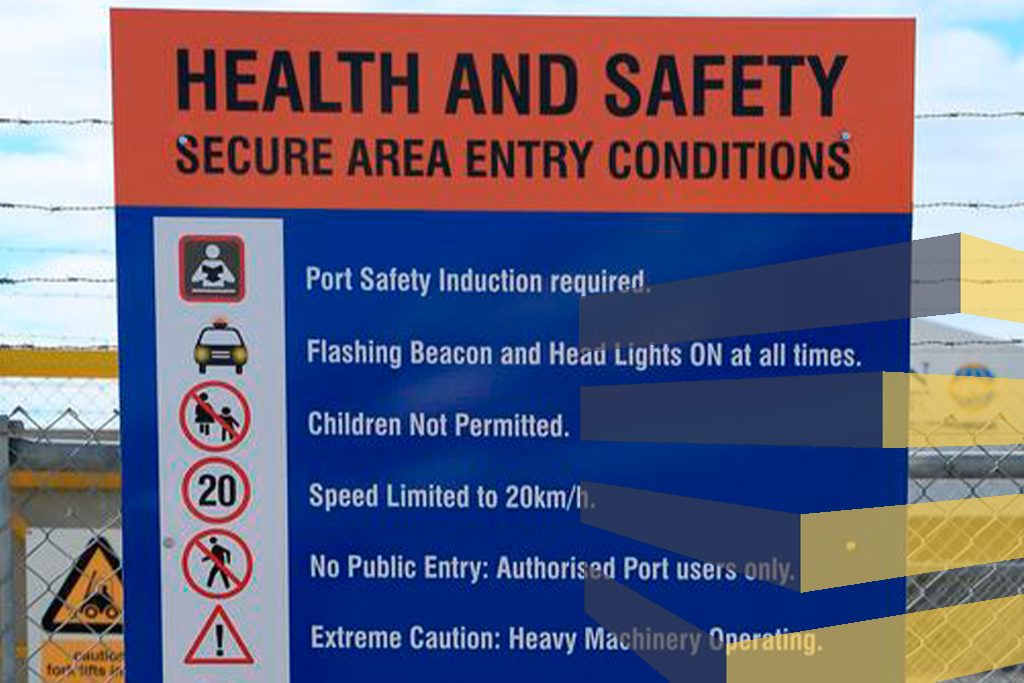
Through training, they learn best practices for handling equipment, materials, and substances, so the risk of accidents and injuries is reduced. This also promotes equipment longevity and operational efficiency.
It ensures that employees are prepared to respond to emergencies such as fires, spills, or medical incidents. They should learn evacuation procedures, how to use fire extinguishers, and how to administer basic first aid. This can be critical in diminishing emergencies and potentially saving lives.
10) Invest in technology
Automated systems provide real-time insights into various aspects of warehouse safety. This includes sensors for detecting factors like temperature and air quality, as well as catching equipment malfunctions or potential hazards. Furthermore, collision avoidance systems and warehouse management sofware help optimize workflow.
Drones and autonomous robots can be used for inspecting hard-to-reach or dangerous areas, diminishing the need for employees to access these zones. You can also complement safety barriers with tools such as barcode systems, security cameras, sensors, and automated gates.
Serviap Logistics can help you with warehouse safety
At Serviap Logistics, we have experience in setting up warehouses and distribution centers, and our coverage extends to Brazil, Mexico, and the United States. Our services include providing and installing warehouse signage, floor marking, collision protectors, and racking, while we also supply labels and offer industrial cleaning.
We are committed to upholding the highest standards of safety wherever we work, while we are also known for our efficiency and ability to hit tight deadlines, which has helped us become the trusted partner of some of the biggest and best-known companies in the world.
Contact us to find out more.
If you were interested in this article offering warehouse safety tips, check out more of our coverage.


